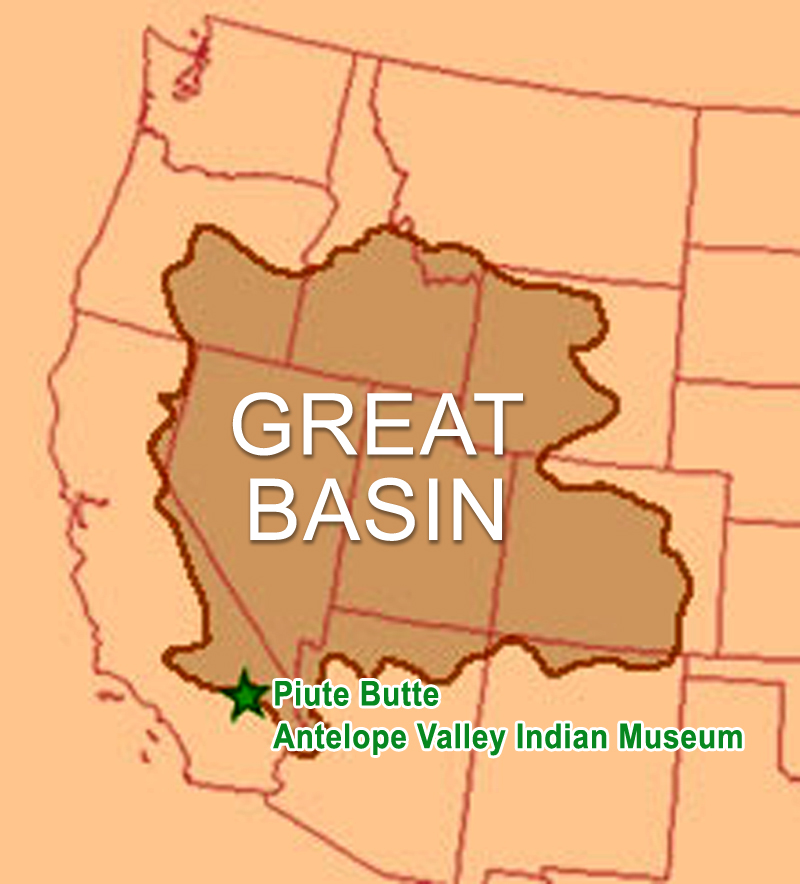|
|
Piute Butte | AVIM State Historic Park

Click image to enlarge
July 26, 2014 — Modified anthropomorphic rock feature (female anatomy) at Piute Butte. Observed during a special evening hike led by Peggy Ronning, curator of the Antelope Valley Indian Museum. Ronning explained that water is associated with female fertility; when it rains, the feature fills with water and it runs out. Photo by Linda Pippin.
"Piute Butte" is the modern name of a granite outcropping located on the grounds of the Antelope Valley Indian Museum State Historic Park in eastern Lancaster, north of Lake Los Angeles. In a larger context it sits at the southwestern edge of the Great Basin region, which covers 400,000 square miles from the Sierra Nevadas to the Rocky Mountains. It has seen many peoples live and pass through the region over the last 12,000 to 13,000 years including, in more recent times (the past 2,000 years or so), the Kawaiisu, Serrano, Kitanemuk and Tataviam.
"By 2000," writes Edra Moore, the state park's first director, "the body of evidence that had been accumulating seemed to support the hypothesis that the upper rocky slopes and crest of the butte may have been reserved for ritual and ceremonial purposes during prehistoric times." Current Native American residents "have long perceived the butte as having spiritual significance," she writes, and in 2003, Piute Butte was added to the California Native American Heritage Commission's Register of Sacred Sites. Further study concluded that the "petroglyphs, pictographs, cupules, and rocks culturally enhanced to resemble symbols associated with fertility, in combination with natural outcrops, boulders and monoliths resembling human or animal shapes, represent ... a general religious pattern found throughout (pre-contact) southern California." Similarities were found between the butte's features and other examples in Southern California and the Great Basin that are associated with cosmological concerns such as fertility, weather monitoring, seasonal renewal or other astronomical associations. Radiocarbon dating on pigment samples yielded a calibrated calendar age range of between 150 B.C. and A.D. 400. Piute Butte can be observed at a considerable distance from a park trail. The butte itself is off-limits to the public.
HB1401a: 19200 dpi jpeg from digital image by Linda Pippin. |
Building x7
Piute Butte x2
Female Fertility Feature x4
Piute Butte: A Preservation Planning Study (Moore 2009) Lovejoy Springs & Western Mojave Desert Prehistory
|
The site owner makes no assertions as to ownership of any original copyrights to digitized images. However, these images are intended for Personal or Research use only. Any other kind of use, including but not limited to commercial or scholarly publication in any medium or format, public exhibition, or use online or in a web site, may be subject to additional restrictions including but not limited to the copyrights held by parties other than the site owner. USERS ARE SOLELY RESPONSIBLE for determining the existence of such rights and for obtaining any permissions and/or paying associated fees necessary for the proposed use.







